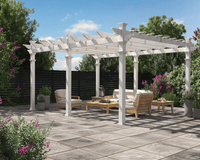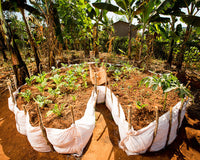Sad that the harvest season is over? Bring the fun of a vegetable garden inside your home with a winter container garden! Just because summer comes to a close doesn’t mean the vegetable garden season must end. Plant a winter container vegetable garden in a sunny spot in your home for year-round edibles. A few things an indoor vegetable garden will need is good sunlight, warm temperatures, a good soil mixture, space for roots to grow, water, fertilizer and pest control. A variety of vegetables have successfully grown indoors during the winter – even in low-light northern areas with supplemental grow lights – including green beans, lettuce, kale, cabbage, carrots, winter squash, onions, tomatoes, zucchini and all types of herbs. Here are steps to take to create a successful fall or winter vegetable garden:
Select Containers
There’s no need to purchase expensive containers for your winter vegetable garden. Use empty milk jugs, dishpans or even window boxes. The containers should be cleaned out with soap and water and if there is no drainage hole, create one or two with a drill. Make sure floors and rugs are protected from water seepage from the containers.
Pick a Sunny Spot and Supplement with Grow Lights
Most vegetables need six hours of full sunlight per day, particularly tomatoes. If you live in northern climates where sunlight is scarce, do purchase some grow lights to make up the deficit of light. One sure way to know if plants are not getting enough sun: they grow tall and spindly.Make Sure the Winter Garden is the Right Temperature
Temperatures should be about 80 degrees F during the day and can get as low as 60 or 65 degrees F at night; this is particularly important for plants with fruit, such as tomatoes. If you are growing greens, this is less important since plants such as lettuce and spinach like cooler temperatures.Be Aware of Plants that Need Pollination to Bear Fruit
Pollination will be an issue for fruit-bearing plants (such as tomatoes, cucumbers, peppers, etc.). Read the seed packages carefully and do research on the Web about on the different varieties of fruit-bearing plants to see how you need to participate in the pollination process. Sweet peppers and eggplant can be manually pollinated; but other plants, such as tomatoes and beans must be gently shaken each day to release the pollen. If you are growing greens or root vegetables pollination will not be an issue.Use Good Soil
 Via https://www.flickr.com/photos/chris_radcliff/135740129/ An all-purpose potting mix purchased from a store will work well for a winter vegetable garden.
Via https://www.flickr.com/photos/chris_radcliff/135740129/ An all-purpose potting mix purchased from a store will work well for a winter vegetable garden.



